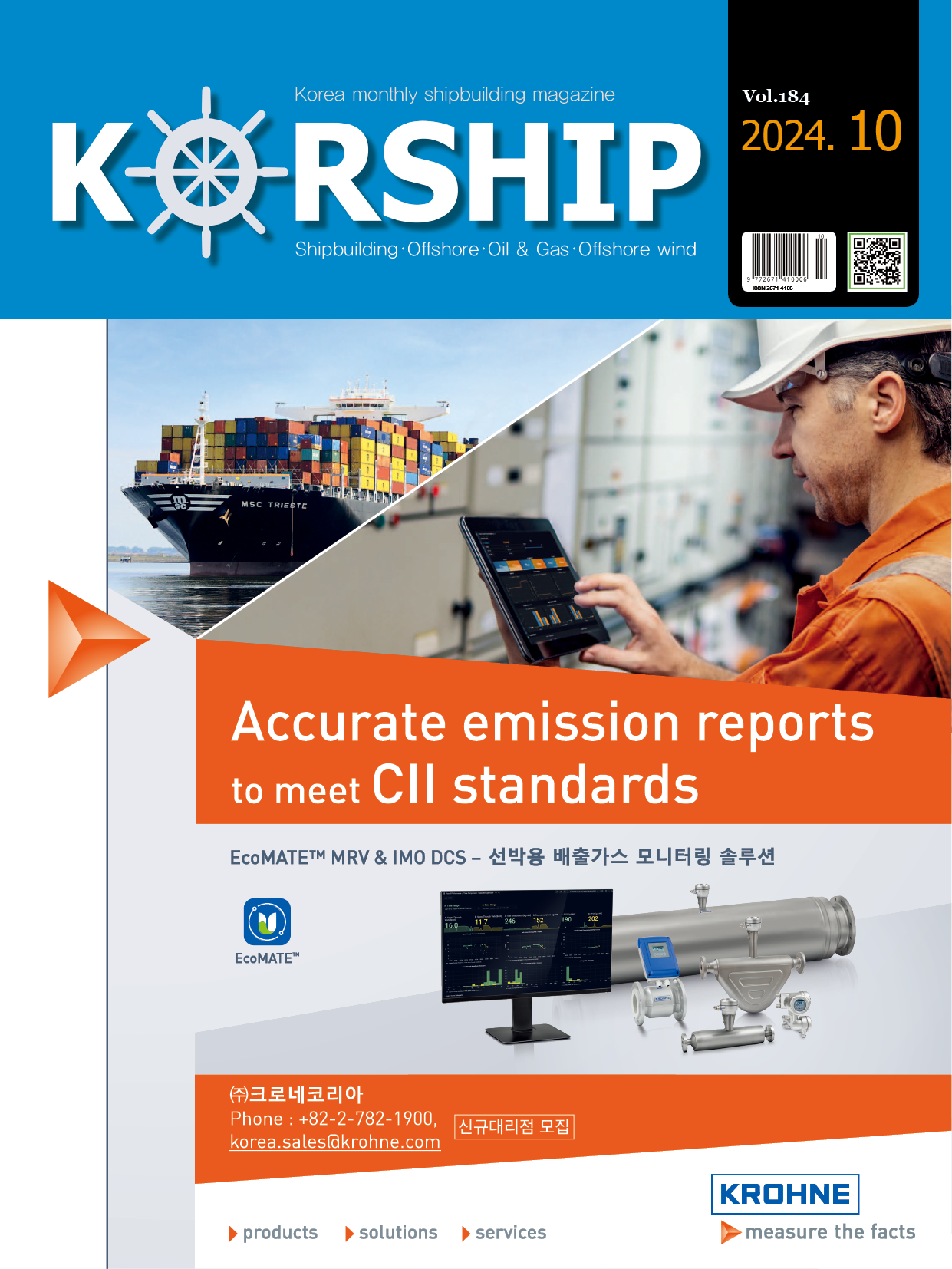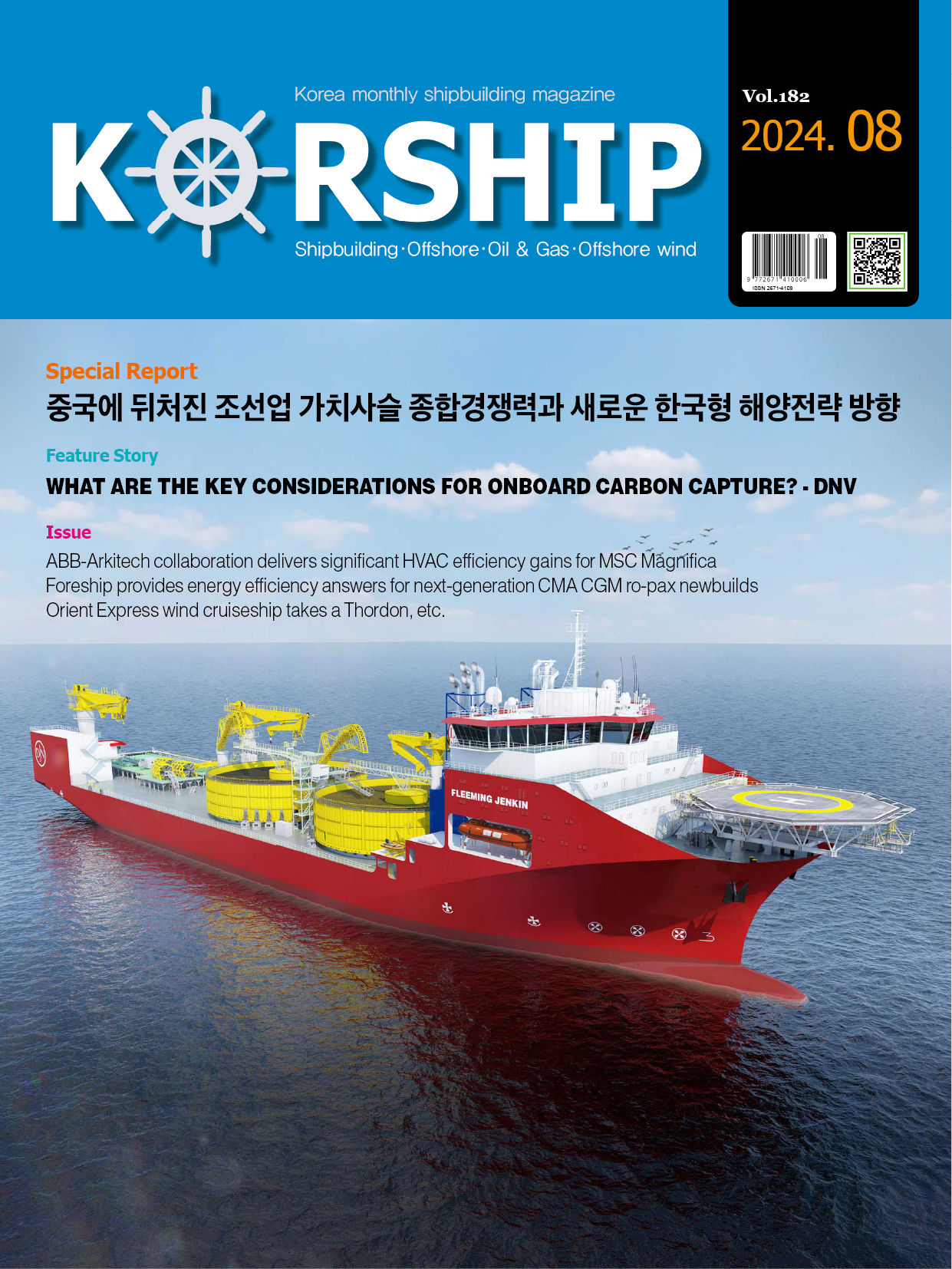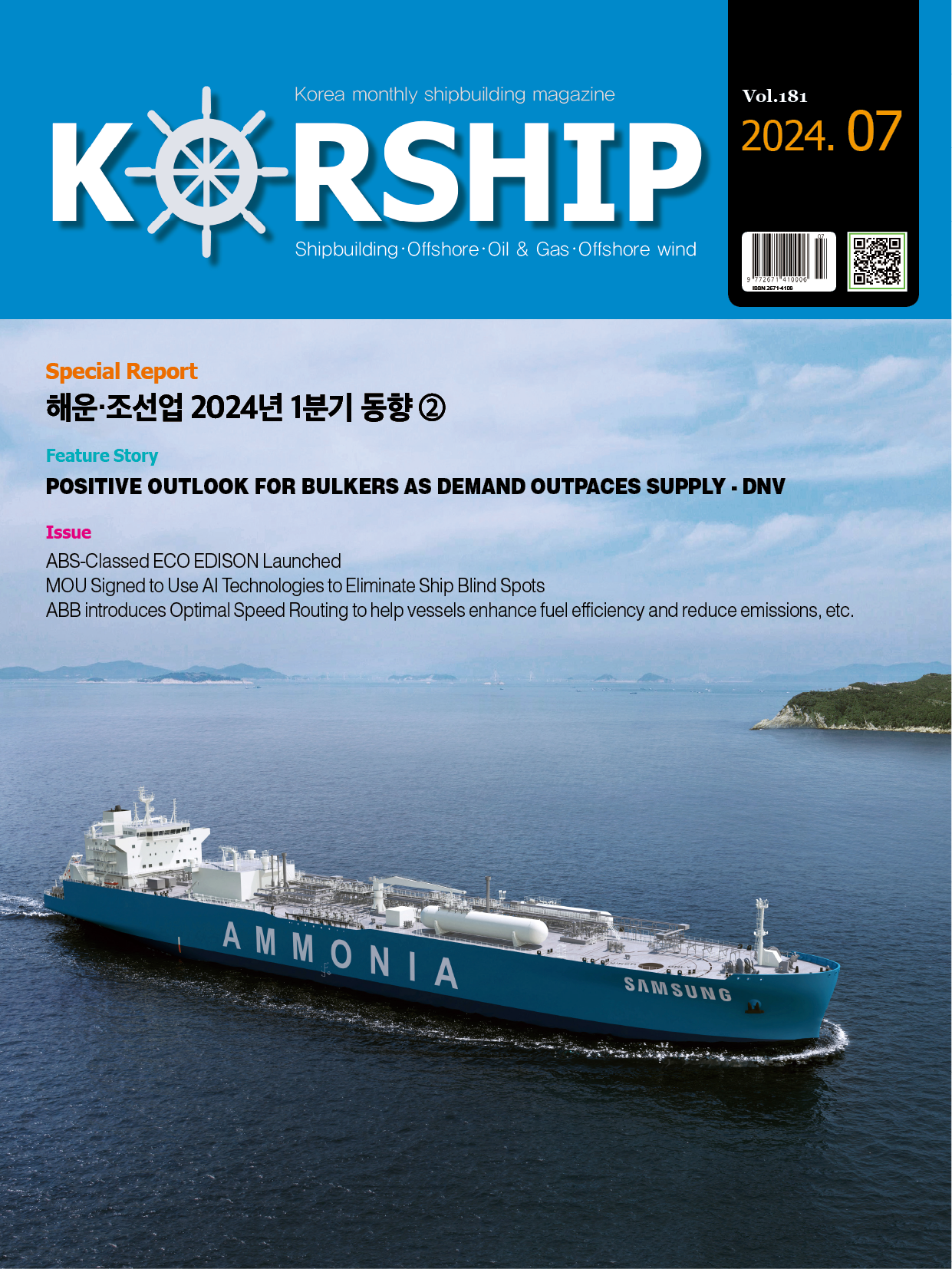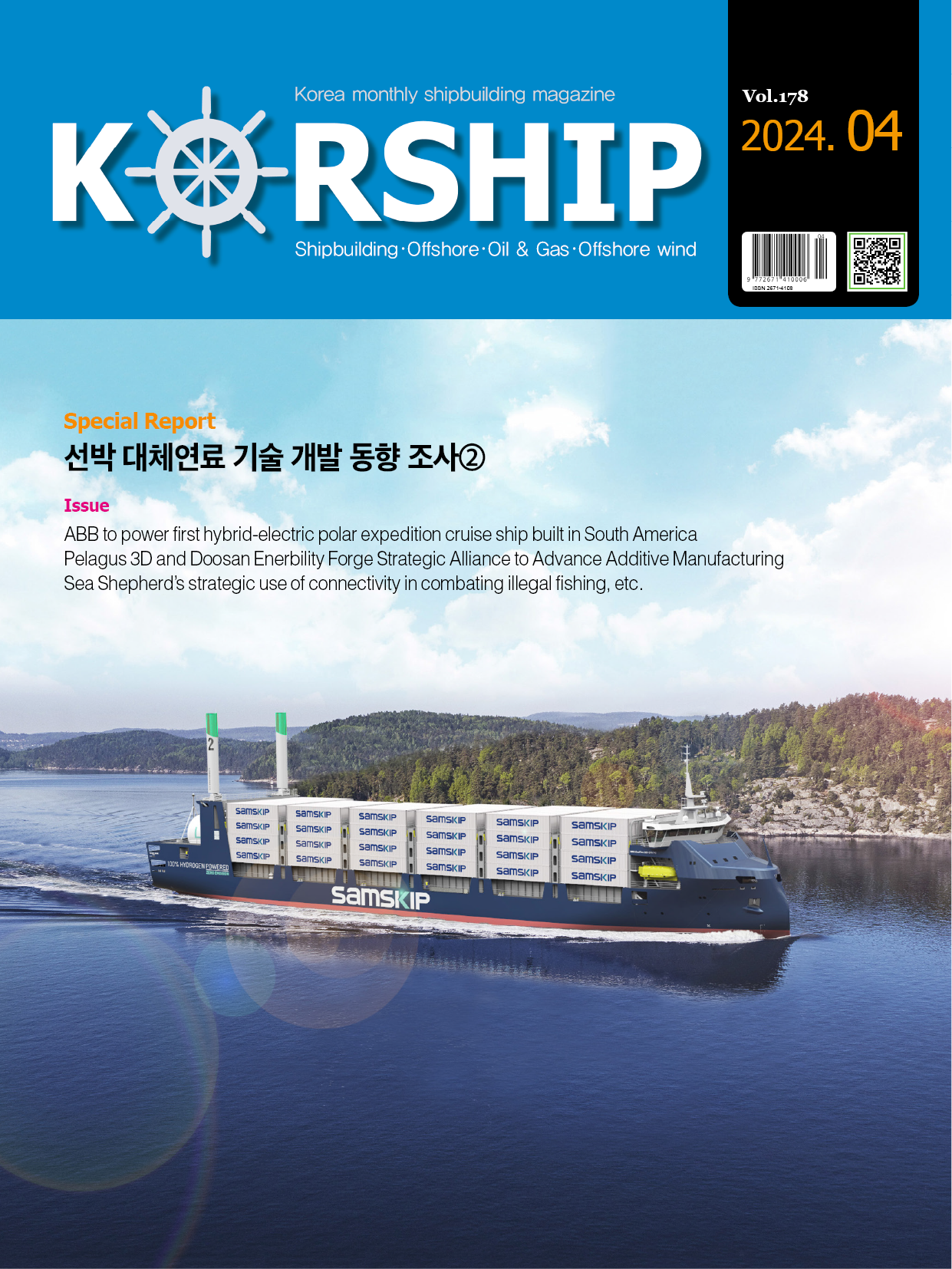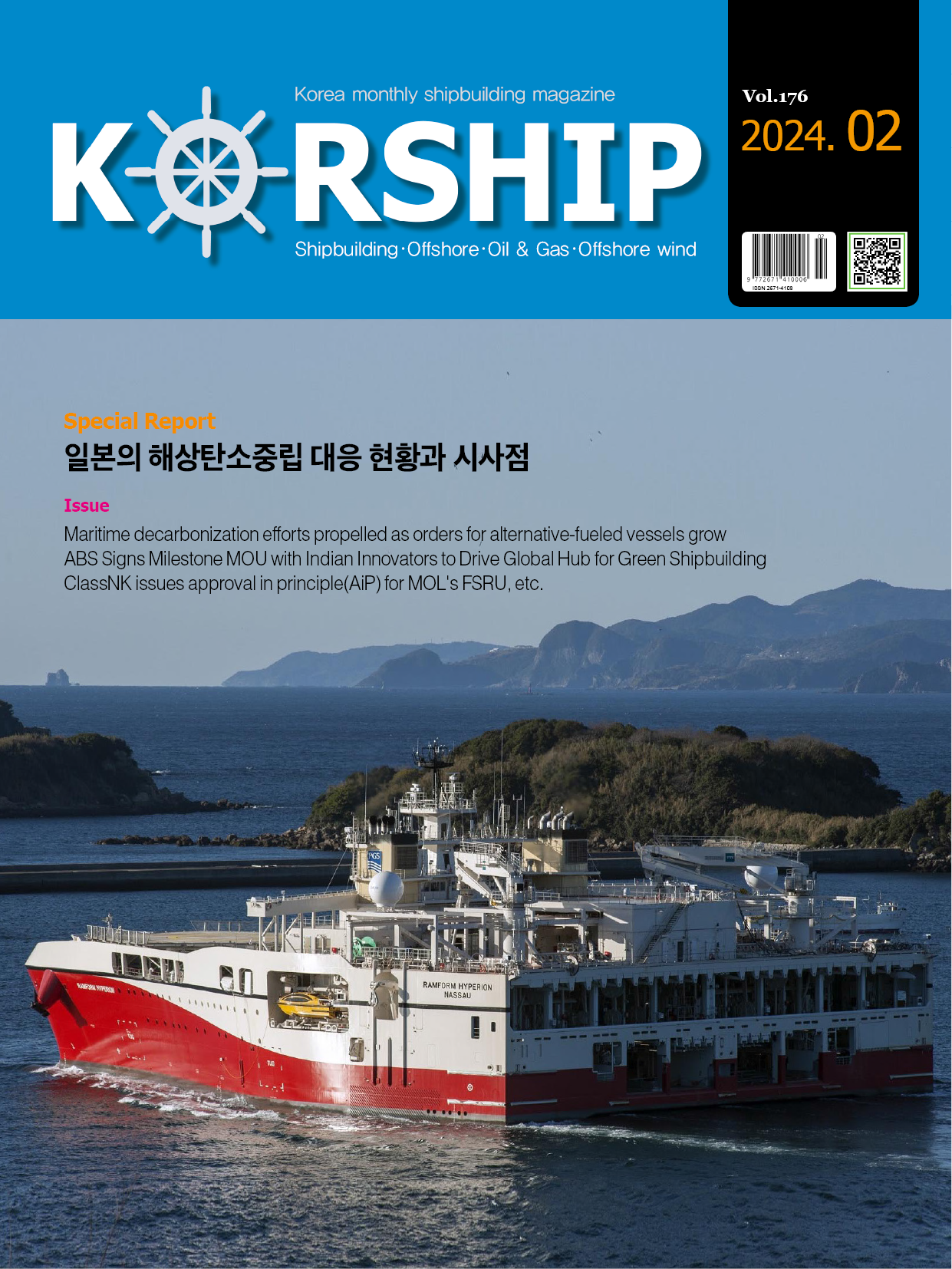Feature Story Positive outlook for bulkers as demand outpaces supply
페이지 정보
작성자 최고관리자 댓글 0건 조회 1,029회 작성일 24-07-16 14:49본문
Growing global demand for commodities and a sluggish newbuild market up until 2023 have set the stage for bullish growth in the bulker market in the coming years. Bulker owners are taking advantage of these favourable market conditions and starting to invest.
International demand for dry cargo is increasing
Although high interest rates and inflation have hampered the global economy over the past few years, demand for dry cargo remains strong, increasing by over 5% in 2023, led by some key commodities.
“Demand for iron ore, which has the biggest share of the global dry bulk market, is still strong,” says Morten Løvstad, Vice President and Global Business Director for Bulk Carriers at DNV. “Even the demand for coal, which has the second-largest share, has remained strong despite forecasts that this would decrease due to the energy transition. On top of this, the demand for grains and especially soybeans is growing exceptionally, together with what we commonly refer to as ‘minor bulk’.”
China drives demand for bulkers
China, the largest global importer of dry bulk commodities, has been dictating the strength of the bulker market for years.
“The Chinese economy seems to be picking up again after some weak years during and just after the Covid-19 pandemic. While there is still uncertainty related to the strained Chinese real estate sector, and how this will impact the demand for iron ore and steel products, overall it seems to be heading towards a soft landing,” says Løvstad.
This is being reinforced by the need to secure energy supply in China. “Although China is significantly expanding its renewable energy infrastructure, it continues to prioritize energy security. Coal is still the easiest way to achieve this, and we saw a record number of new coal-fired power plants being constructed in China in 2023, driving continued high demand for coal imports.”
Demand for food-related commodities increasing rapidly
“On top of this, demand for food-related commodities is actually increasing faster than anything else,” continues Løvstad.
For example, demand for soybeans increased by over 10% in 2023, driven by an expanding global population and changing eating habits.
“In China, the population’s diet is shifting from mainly rice and vegetables to more meat-based,” says Løvstad. “This resulted in sharp demand increases for soybeans as animal feed, boosting exports of soybeans from Argentina and Brazil to China.”
Longer distances lead to increased tonne miles
High demand for dry bulk commodities means more tonne miles, which has been reinforced by geopolitical developments.
“Events such as the Ukraine conflict and Red Sea attacks have altered trading patterns, leading to longer shipping routes. The result is a higher increase in total tonne mile demand compared to the pure tonne demand,” says Løvstad.
Demand for bulkers is outpacing supply
Favourable market conditions for bulker owners are amplified by a supply/demand imbalance for vessels. This has mainly been driven by extremely low newbuild activity between 2019 and 2022, resulting in demand outpacing supply.
“At the beginning of 2023, the ratio of the bulk carrier orderbook compared to the entire fleet was only around 5%, which was the lowest ratio in 30 years,” says Løvstad. “At the other end of the scale, much of the existing fleet is ageing, with around 30% being older than 15 years. These vessels are low on fuel efficiency with uncompetitive operating costs, and struggle to stay compliant with environmental regulations. That makes them less attractive to cargo owners and they are gradually being phased out.”
Strong freight rates for bulker owners
These factors have pushed freight rates up.
“In the second half of 2023, we saw a strong uptick in freight rates, largely due to more clarity around some key factors, like the impact of the Chinese real estate market collapse on steel production and imports in China, and IMO environmental regulations following MEPC 80,” says Løvstad.
“The first quarter of 2024 was also extremely strong – actually the strongest Q1 for ten years. For some vessels, like the Capesize fleet, freight rates increased by 30% in the first quarter to reach as high as USD 35,000 per day, compared to a break-even rate of about USD 15,000–20,000 per day for the majority of the fleet.
“Although these rates softened at the end of the quarter, we believe they will remain quite firm, and strengthen again during the second half of 2024 and onwards.”
Bulker owners keen to reinvest profits in newbuilds
As many bulker owners profit from current market conditions, and the outlook for the next three to five years remains strong, the appetite for reinvestment in newbuilds is high.
“Even though it made more sense, tactically, to invest two years ago when newbuild costs were almost 40% lower, and yard space is now getting more limited, we are seeing growing demand for newbuilds. We observed an increase in new orders in 2023, especially for Ultramax and Kamsarmax orders, with more of the same expected in 2024,” says Løvstad.
New bulker orders struggling to keep pace with retiring vessels
Although the proportion of vessels on the orderbook compared to the entire fleet has risen to around 8.5%, this is still low. “With the continued strong demand increase, this ratio between orderbook and fleet would need to be much higher – around 15–20% – for the market to be in balance, especially as many older vessels are likely to be phased out over the next five years.”
“In 2023 more than 150 Ultramax and 150 Kamsarmax orders were placed, reflecting the expected phasing out of a high number of aged Supramax and Panamax vessels. In 2024 we expect this to continue, but with a focus switch towards the Handysize and Capesize segments.”
Some factors could constrain newbuild activity
According to DNV estimates, between 400 and 500 bulkers will be ordered on average every year over the next five years. However, this will be restricted by availability of yard space, while the time it takes from order to delivery means that it will be at least three years before supply begins to catch up with demand.
Some other factors, such as uncertainty around investment in decarbonization technologies, could also restrain newbuild momentum.
“Because the capex for new bulkers is lower than most other segments, the additional capex for adding sophisticated alternative fuel solutions accounts for a much higher percentage of the overall vessel value,” says Løvstad. “For example, a dual-fuel LNG solution costs around the same for tankers and bulk carriers – around USD 15–20 million for a Newcastlemax bulker and a VLCC tanker. This accounts for an additional 15–20% of the overall capex of a VLCC but closer to 25–30% of the capex of a similarly sized Newcastlemax.”
What is the path to decarbonization for bulkers?
A range of factors cause bulkers to lag behind some other segments when it comes to decarbonization.
“For example, container shipping is more closely linked to global supply chains where environmental sustainability has been established as a more prominent concern among clients and end users for a longer period of time,” says Løvstad. “Additionally, container shipping companies are much more consolidated and therefore often have greater financial resources than dry bulk companies, giving them more scope to invest in new technologies, pilot projects and alternative fuels.”
Bulk carriers are also optimized to carry heavy cargo at a moderate speed. This makes them more energy efficient than other segments, such as containerships, with a lower carbon footprint per tonne mile, which reduces the urgency to decarbonize.
Low uptake of alternative fuels for bulkers
Some other factors are restraining the uptake of alternative fuels for bulkers. For example, many smaller bulkers have unpredictable and diverse “tramping” routes, which reduces the predictability of bunkering options.
“In some segments, like containerships, most vessels have fixed routes and know exactly where and when they need to refuel. This is different for smaller bulkers, which bunker in diverse locations. This is a particular challenge if the supply of fuels like ammonia or methanol is not ubiquitous,” says Løvstad.
“We therefore think that at least 90% of the newbuilds over the next five years will still be based on conventional fuel and that there will be a lot more focus on energy efficiency measures, combined with the use of biofuel as a drop-in fuel.”
Energy efficiency options for bulkers
Several energy efficiency options are already being applied to bulkers, with this set to become more common during the upcoming wave of newbuilds. These include design improvements, operational efficiencies and an array of energy-saving devices, such as shaft generators, variable-frequency drives and wind-assisted propulsion systems(WAPS). Bulkers can also take advantage of digitalization solutions, such as DNV’s Steel Load Planner app, which can help to reduce emissions by optimizing utilization space in cargo holds.
“There is not one fixed solution which is suitable for all types of bulkers. WAPS look promising for the bigger, gearless bulkers(Kamsarmax, Capesize etc.) because of the high availability of deck space as well as the fact that these vessels generally take long voyages on open seas, where wind conditions are usually more favourable.
“Such equipment may be less suitable for geared bulkers due to conflict with the on-board cranes as well as the fact that many of these vessels take shorter voyages with more frequent manoeuvring in and out of port.”
What will bulkers of the future look like?
“The majority of newbuilds will be optimized for low fuel consumption at lower speeds – typically 10 to 12.5 knots. Combined with energy-saving technological solutions and drop-in biofuels, this is likely to be the most cost-efficient and widespread decarbonization path over the next five years,” says Løvstad.
“However, we should still see some of the bigger vessels(Capesize, Newcastlemax, VLOC) and smaller vessels in specialized or coastal trade powered by alternative fuels. Most of these will continue to be LNG-based but we are also expecting some growing interest for methanol- and ammonia-powered vessels.”
Further down the line, perhaps in ten years, technologies like on-board carbon capture and storage could also play an important role.
“All options are on the table, and we will likely see a combination of measures being implemented in the coming years,” concludes Løvstad.
■ Source: DNV www.dnv.com
- 이전글Power routing will reduce fuel costs by 6-8% for Corsica Linea 24.07.16
- 다음글해운·조선업 2024년 1분기 동향 ② 24.07.16

